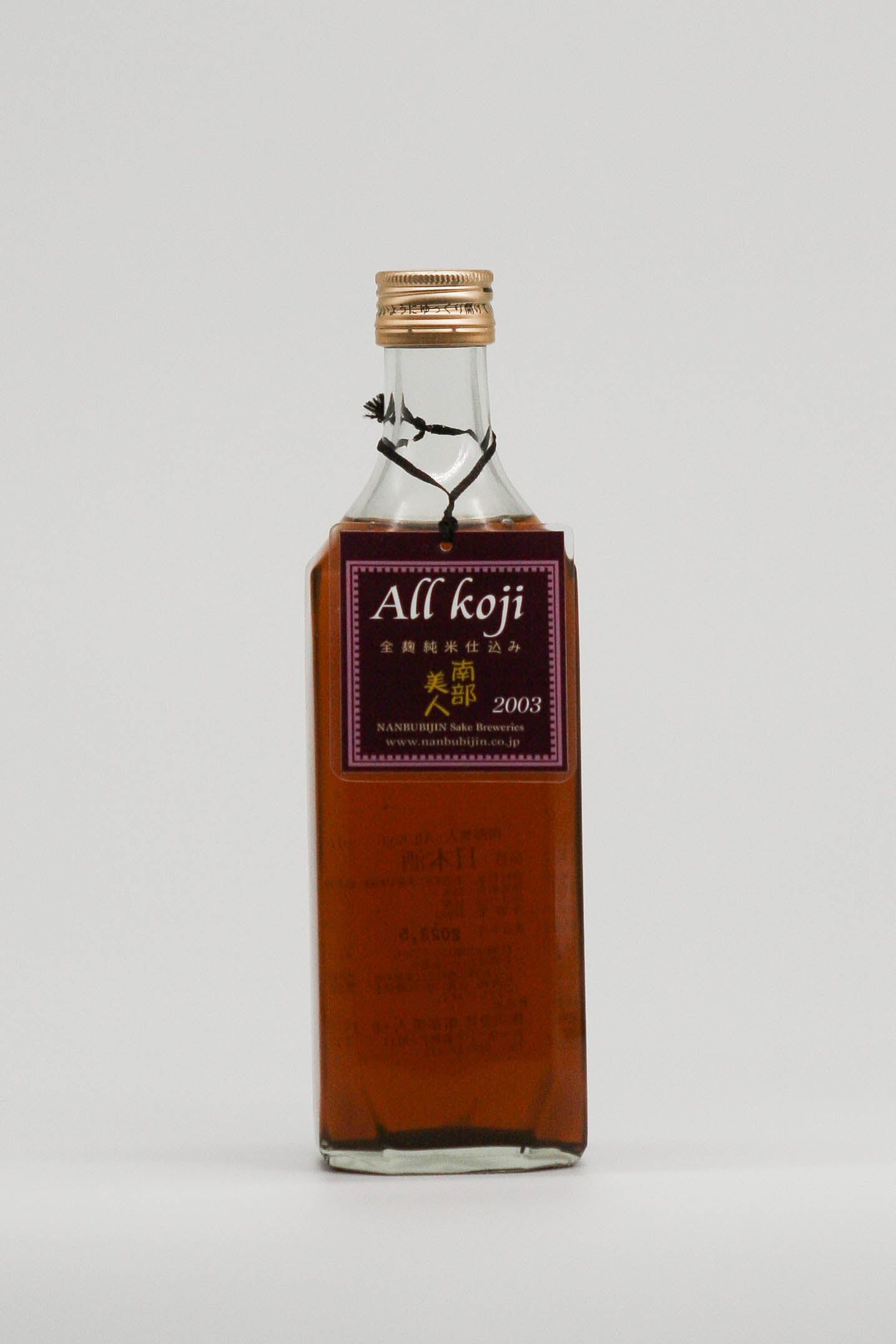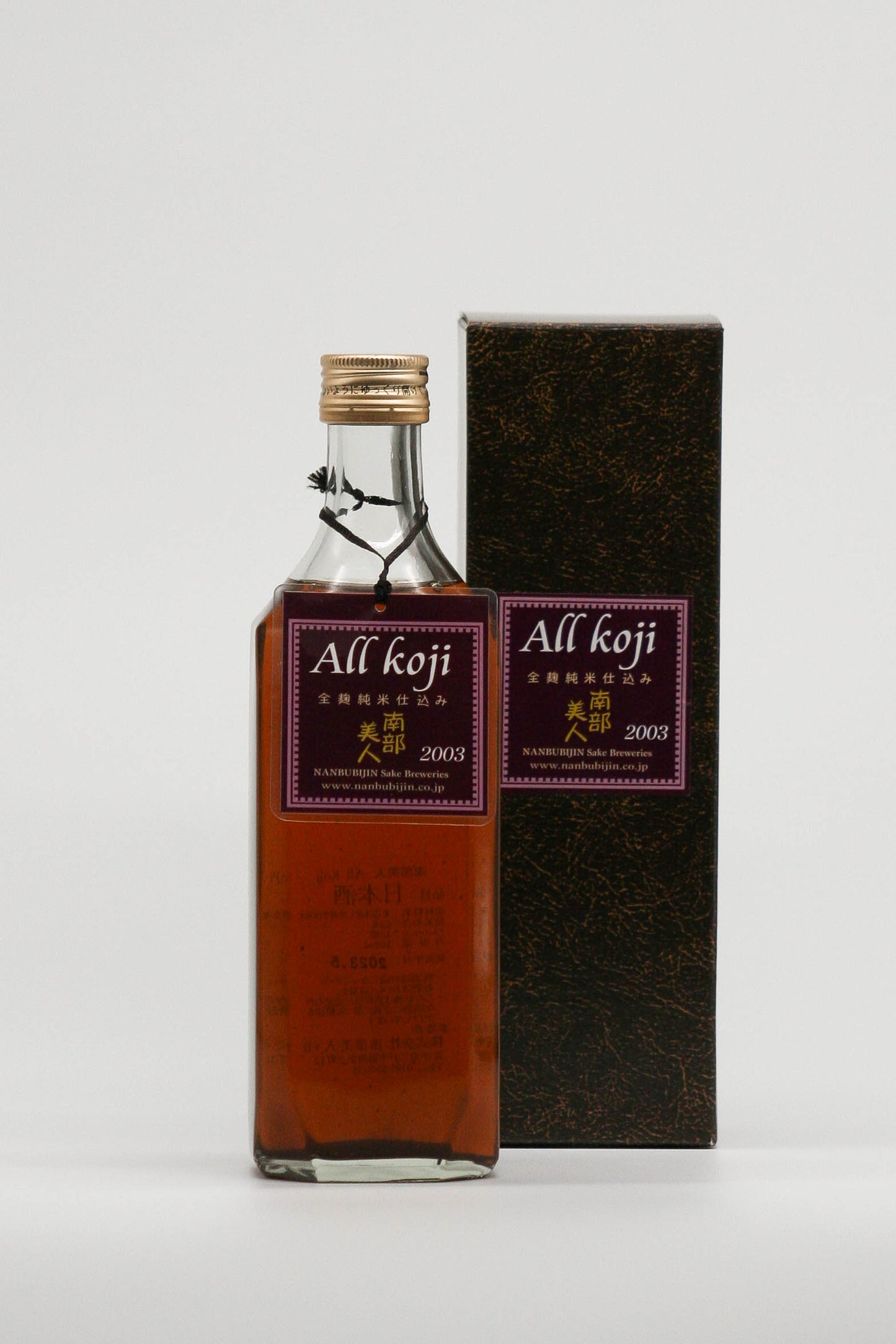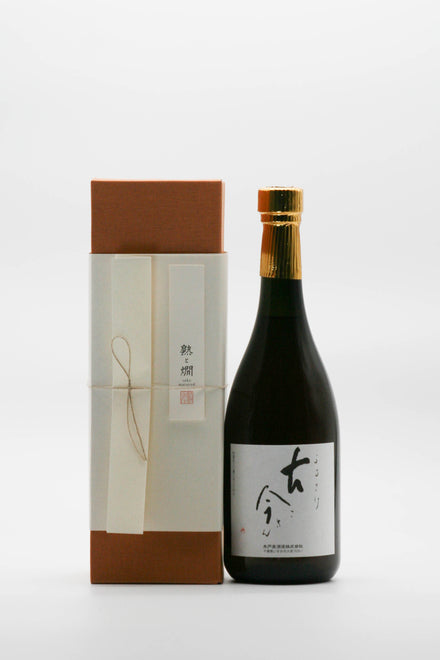


This sake is brewed entirely with Koji which gives it a rich sweetness and umami.
Nanbu Bijin All Koji 2003
| Vintage | 2003 |
| Years aged | 20 years |
- 10 years or more
- 2000-2009
- 5,000 - 9,999 yen
- All Products
- Golden yellow
- With dessert and/or as an after-dinner drink
- Brewer:southern beauty
- Alcohol:private
- Volume:500ml
Couldn't load pickup availability
[ Drinking alcohol under the age of 20 is prohibited by law. ]
This sake is made using a different manufacturing method from regular sake. In this method, the entire amount of rice used in the fermentation has been converted into koji. You can feel the rich sweetness, flavor, and elegant acidity that derive from the koji.
Great for after-dinner drinks and desserts. It also goes well with spicy dishes.
*As a by-product of maturation, lees (sediment) may be in the bottle. You can enjoy just the clear part, but as the lees are concentrated with umami, mixing the contents provides an even deeper and layered taste experience.
*As is the case with many long-matured wines, due to the long storage in bottle, mold may be present in the bottle opening, but please rest assured that the silicon on the surface of the lid prevents any of this from getting into the sake (in the same way that a cork functions in a wine bottle). Wipe the opening clean before drinking.
- about
-
Type 全麹 Rice polishing ratio 65% Yeast type private Ingredients/raw materials rice, rice malt Rice type Toyonishiki, etc. Origin of rice private Toji(Brew Master) Makoto Tamura Assemblage 無
- Recommended occasions/temperature
-
- How to store
-
- Delivery dates and charges
-



Tasting comments
-
Nobuhiro Ueno
(Juku to Kan Bar Master / Permanent Director of the Toki Sake Association)Nice color and sparkly.
The entire expression is adorned with savory aromas. It also has the characteristic sweet aroma of a Zenkoji-zukuri sake (all rice used in mash is converted into koji).
A gentle attack, before slowly spreading outwards.
It has sweetness, astringency, and umami, and although it is not very acidic, it has a good consistency. No accompaniments needed to enjoy.
With its pleasant aftertaste, I want to enjoy it slowly in a dessert glass after a meal.
Brewer


southern beauty
Although it was founded in 1902, the brand name ``Nanbu Bijin'' was created in 1951 by the late Tadashi Ito, who was then the head of the Ninohe tax office, and the late Kuji Kuji, the company's former chairman. Hideo expressed his desire to ``make beautiful sake,'' as sweet sake with a low rice polishing rate and a lot of off-flavors is the mainstream nationwide, and Ninohe City, Iwate Prefecture, has long been called the country of the south. The area is blessed with wonderful nature, climate, and an abundance of water, and we named it ``Nanbu Bijin'' because of the southern part of the place and the image of clean and beautiful sake quality.
Nanbu Bijin's product line is aimed at long-term aging sake, and has the potential to be used not only for hot sake, but also for rock, straight, fruit, and iced drinks.
In the future, they will continue to manufacture and develop these alcoholic beverages, as well as alcoholic beverages suitable for long-term aging, and products for warmed sake that will enhance the best drinking time.



